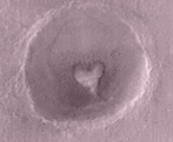Heads up: Plan for traffic and road closures this Sunday for Bay to Breakers.
Science News
Happy Valentine's Day
February 14, 2012

Happy Valentine’s Day, science-fans! We have a heart-filled post for you today.
We’ll start with love-struck dinosaurs. Why not, right? Our favorite paleo-writer, Brian Switek is running a series on dinosex in Smithosonian that really shouldn’t be missed. “How did the Biggest Dinosaurs Get it on?” You know you’ve been curious. Switek offers theories speculating about sauropod sex that confound and amuse—one proposes a prehistoric “hot tub” might have helped the weight issue. Another post offers a “necks for sex” hypothesis, similar to giraffe antics. Enjoy!
To go along with the Academy’s newest exhibit, Animal Attractions, we’ve offered a post or two and video about animal mating in the past few weeks. But what about those who abstain? Today, Discover offers a wonderful image gallery of “Creatures That Say No to Sex.” It includes female lizards and sharks that don’t need males, just parthenogenesis.
Some researchers hypothesize that the ability of sharks to reproduce via parthenogenesis is what allowed them to become one of the oldest species on the planet: When males were scarce, females could just make progressively younger copies of themselves to wait for Mr. Right Shark to come around. (Which might even be a good idea for our species.)
And what about hearts in space? Universe Today and Discover’s Bad Astronomy both offer astronomical Valentines today. Our favorite? The heart-shaped craters on Mars, of course.
Finally, Scientific American has two great features on chocolate in time for tasty Valentine’s Day treats. There’s a great historical timeline on our love affair with the sweet stuff and a preview of a feature story on the future of chocolate, similar to our recent Science in Action on the sustainability of chocolate. Delicious!
Image credit: Malin Space Science Systems/NASA